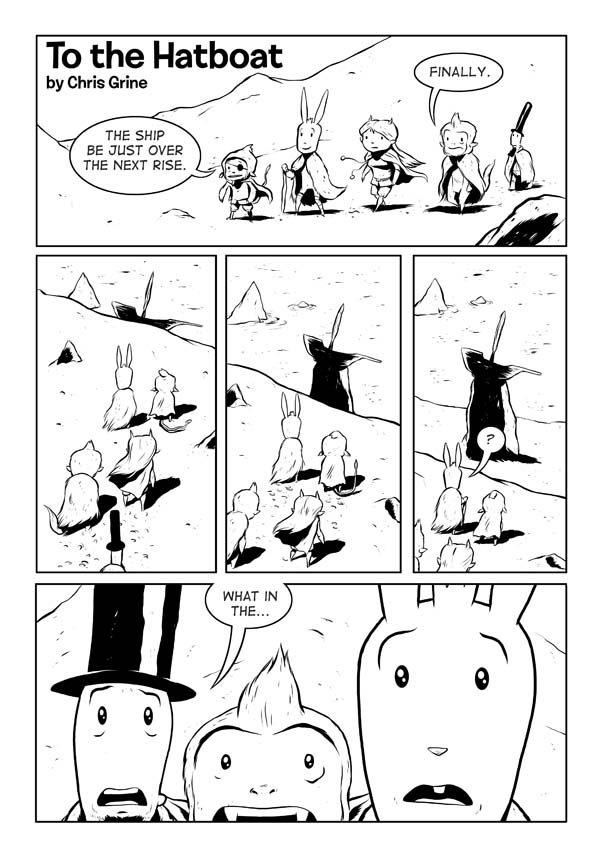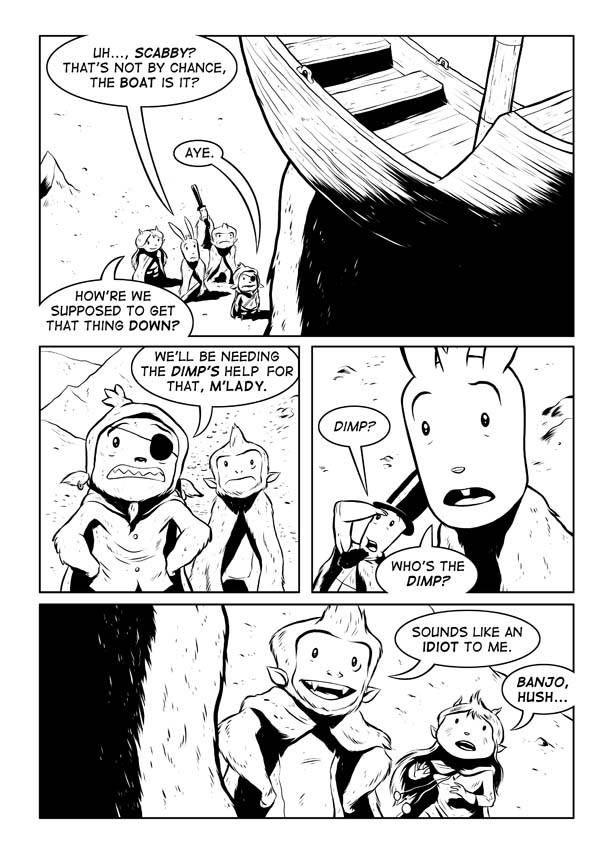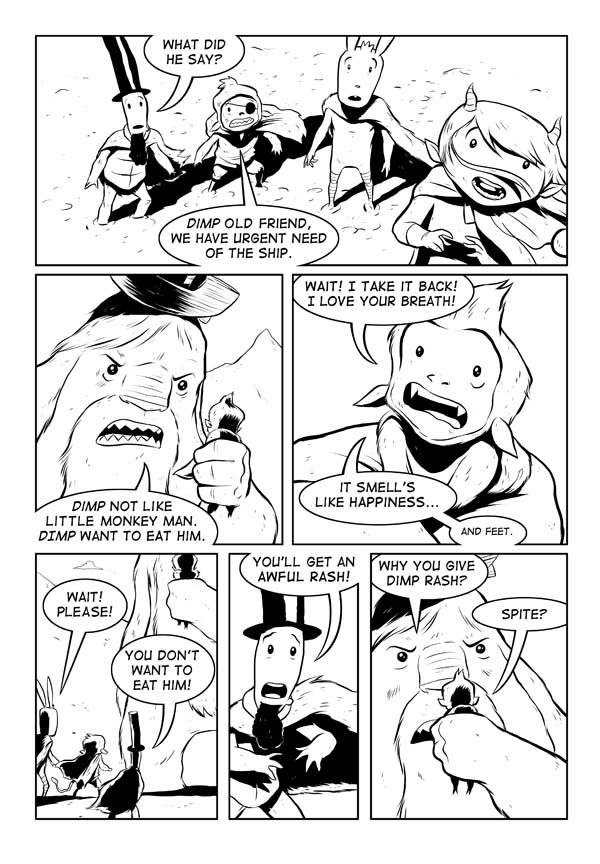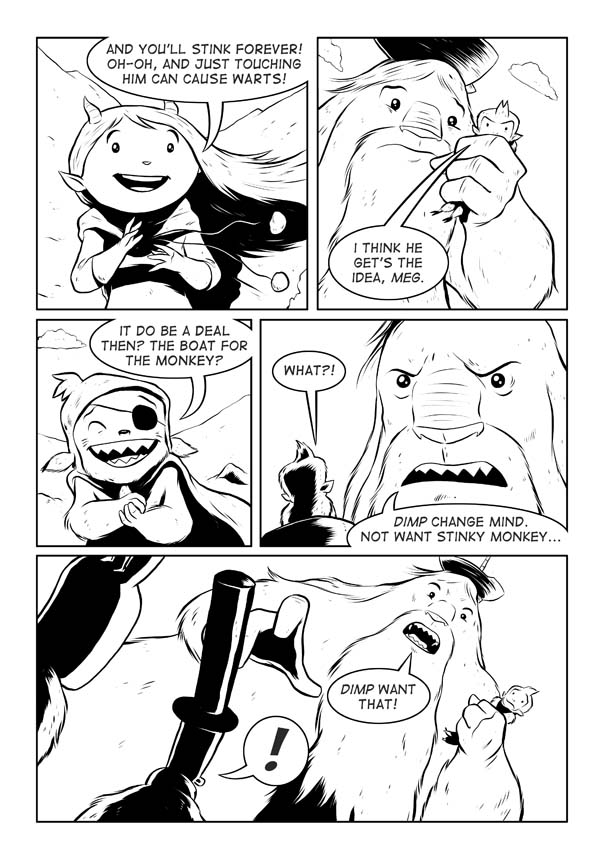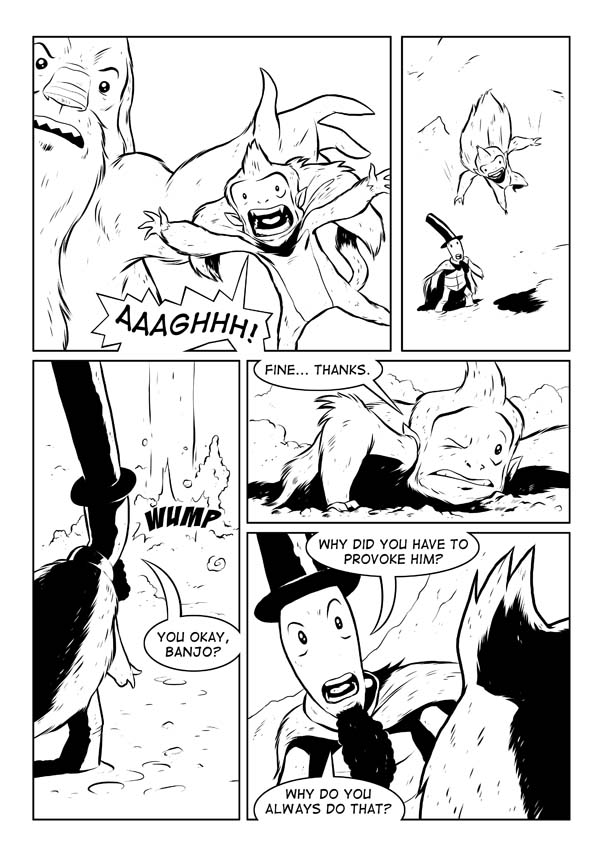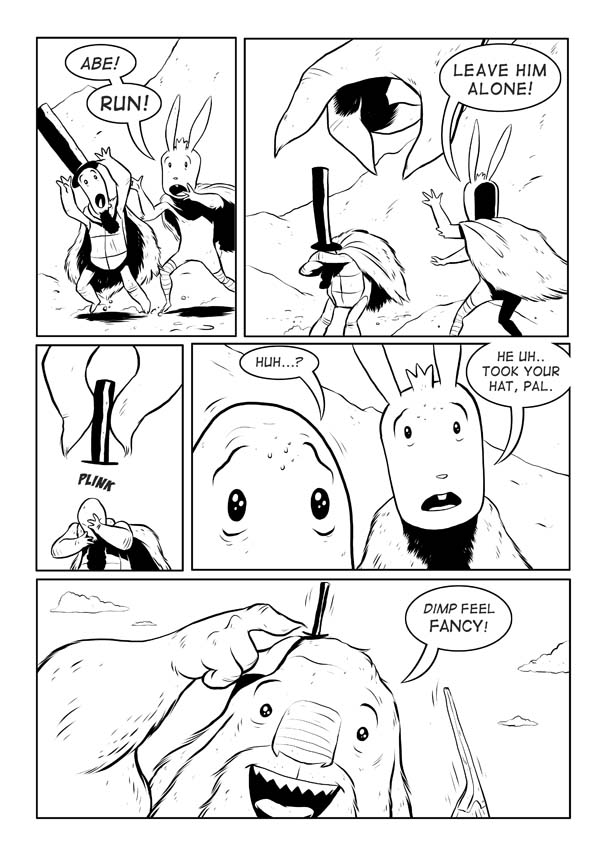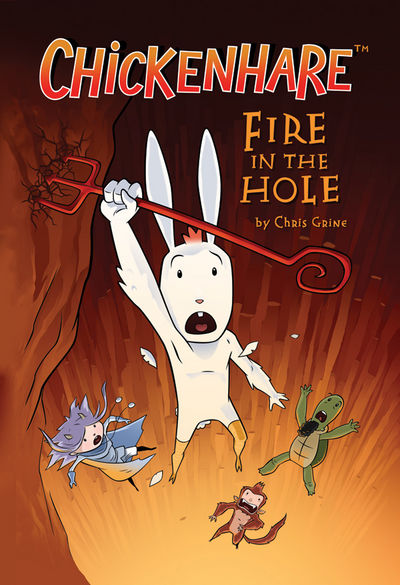 The Eisner nominated book Chickenhare is the perfect story for both children and adults, blending action and adventure with humor and heart. Dark Horse recently interviewed creator Chris Grine to find out how one man can be so talented. As an added bonus, we're giving readers an exclusive, never-before published prologue to Chickenhare Vol. 2: Fire in the Hole. Enjoy!
The Eisner nominated book Chickenhare is the perfect story for both children and adults, blending action and adventure with humor and heart. Dark Horse recently interviewed creator Chris Grine to find out how one man can be so talented. As an added bonus, we're giving readers an exclusive, never-before published prologue to Chickenhare Vol. 2: Fire in the Hole. Enjoy!Dark Horse: The Chickenhare realm is filled with odd creatures. Do you have any strange animals?
Chris Grine: Not really strange, but definitely funny looking. I have two Pomeranians, which some people have compared to largish hamsters. The Shromph characters in House of Klaus are loosely based on them as they're both pretty funny and think they are in charge of everything.
DH: Chickenhare is amazing and it's only your first published work. How long have you been developing the story and characters?
CG: I think Chickenhare is a combination of lots of unused comic book ideas I've had floating around in my head for a very long time. It was most important for me to have characters that were fun for me to draw and had very different personalities for me to write for. As far as the story goes, I had a vague idea in the first Chickenhare book how the story would eventually unfold but it wasn't really until I began working on the second story that things began falling into place.
DH: Like legendary counterculture artist Robert Crumb, you first found that your artistic talent was marketable to a greeting-card company. Has working for a greeting-card company influenced your work in any way?
CG: I don't think it's influenced my work artistically, but it has been good for me as far as developing my technical skills with the computer, and taught me a lot about the business side of things. If I had made Chickenhare right after I graduated from college, it would have been very different and not in a good way, I suspect. It is hard, however, working a full-time creative job and then coming home and working on a 200-page graphic novel every night. It can be overwhelming at times.
DH: How did you get your start in the comic-book business?
CG: Chickenhare was my start, and a very lucky one at that. I just started submitting some Chickenhare comics around to different publishers and waiting for some feedback. I never really thought I would get anything published-just kinda looking for some feedback. I know they get tons of unsolicited artwork every day so when I was rejected across the board I wasn't surprised. A few of the publishers were really nice and offered some good constructive criticism, which was all I could have hoped for. I started reworking my stuff somewhat based on their responses and then one day, out of the blue, I get an e-mail from Dark Horse wanting to know what I had been working on. (I guess Chickenhare had made an impression after all.) Lucky for me, I hadn't just gotten frustrated with the earlier rejection and given up on comic books because I might have missed out on an unbelievable opportunity to do what I've always dreamed of doing.
DH: The first volume, Chickenhare: House of Klaus was nominated for an Eisner, one of the most prestigious awards in all of comics. Has this affected how you want to tell the story or your ideas of what Chickenhare can be?
CG: Not really. If anything, it gave me a confidence boost at a really good time. Chickenhare had gone largely unnoticed in the comics world and it was hard for me to be excited about making more when it seemed like the first book had been such a dismal failure. Turns out it wasn't so bad after all, and to say I was shocked and flattered when the Eisner nominations came out would be a huge understatement. To be honest, I thought there must have been a mistake.
DH: You've stated in a previous interview that you enjoy darker stories that aren't necessarily appropriate for younger readers. Why did you decide to create a saga that appeals to the child in everyone?
CG: It's not that I want to make books that aren't appropriate for younger readers, it's that I don't want to make books that are JUST for younger readers. Some of my favorite books and movies growing up were for everyone, not just kids. I don't think we give kids enough credit and we end up dumbing things down for them and when we do that we lose the other half of the audience. I like to think Chickenhare walks the line between younger and older audiences and I'm really hoping the new book turns some heads in its direction. I truly believe it's a far stronger story this time around, and a bit darker too, but nothing that younger readers couldn't handle.
DH: After finishing Chickenhare: Fire in the Hole, readers will see how the relationship dynamic between their favorite characters has evolved and shifted. Why do you incorporate such complex character development into a story that's geared toward an all-ages audience?
CG: I'm just a sucker for some good character development, I guess. I'd get extremely bored writing these big adventure stories if the characters never learned from what they encountered or grew in any way. For me, it's important for the characters to have these larger issues to work out because it's the flaws in them that make them interesting to work with and endear them to the readers.
DH: Readers catch a brief glimpse of Chickenhare's past in Chickenhare: Fire in the Hole. Can we expect to find out more about Chickenhare's origin in the upcoming volumes?
CG: Absolutely! I'm thinking this Chickenhare series is looking to be a four- to five-book story arc (if it sells well enough to merit future installments). The next book would find Chickenhare and Abe having to deal with the fact that something terrible has happened back home and their need to get back there as soon as possible. This, of course, will be made harder due to the fact that they're currently stranded on a mysterious island. More of their backstories will be revealed along their journey but in small portions, sorry . . . I wouldn't want to give it all away at once; where would the fun be in that?
DH: One of the funniest characters in Chickenhare: Fire in the Hole is Scabby the Shromph. Would you trust him to baby-sit?
CG: Not a chance! That guy is crazy. To be honest, Scabby began as just a throwaway character at the end of the first book, but when the second book took a much darker tone I decided to expand his role to be a type of comedy relief. I'm so glad I did, too, let me tell you. He proved to be really fun to write for as he's always leaping to the wrong conclusions and overreacting to almost every situation. He, too, however, has a very important role to play in the upcoming books, so if you enjoyed him in this book, there's plenty more Scabby to come.
DH: Who would win in a tag-team cage match featuring Chickenhare and Banjo vs. Meg and Abe?
CG: That's a tough question. I think between Banjo and Meg I would have to put my money on Meg. She's far more calculating and would probably take her time and watch for signs of weakness, whereas Banjo would just attack without thinking and then BAM!-Banjo would be pinned. Now it gets interesting, because Chickenhare and Abe are far more gentle souls who probably wouldn't fight, but I guess if they had to I think Chickenhare would win. Seriously, Abe might start out all tough, but in the end you know he's gonna be hiding in that shell. So, I guess since Chickenhare wins for his team and Meg wins for hers that leaves the two of them to fight it out. Sorry Chickenhare, I think Meg would clean the mat with you. For me, the winner is: Team Meg and Abe. You can come out of your shell now, Abe.
